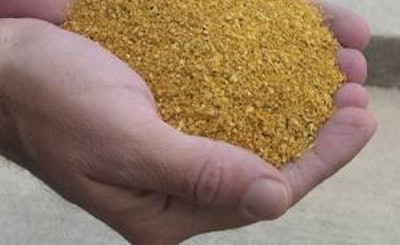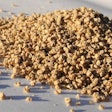
The Distillers Grains Technology Council held its annual symposium this past May in Indianapolis, Ind., attended by nutritionists, commodity brokers and producers of ethanol byproducts, principally distillers grains (DDGS). The symposium covered a diverse range of topics, including transportation logistics, economic supply and demand predictions, mycotoxin concerns and the needs of poultry producers.
The future of the ethanol industry and production of ethanol byproducts is currently in a holding pattern until Congress reaches agreement on the “Green Jobs Bill” and the “Renewable Fuels Reinvestment Bill.” Until this legislation is finalized, production of ethanol and DDGS products will remain stable with very limited increase in production. If enacted, one can expect further investment and expansion in the ethanol industry with a focus on alternative carbon sources such as cellulosic fiber or algae-based production systems if appropriate technology is available.
Export potential of DDGS
Dr. Hoffman, an agriculture economist from the USDA, estimates present livestock use of DDGS to be distributed among beef (63%); dairy (23%); swine (9%); and poultry (5%). Poultry is predicted to grow in the future to attain 9% of total use. Of 30 million tons of DDGS produced in the U.S., 22% is exported to Mexico, Canada and China. This nation is rapidly expanding use of DDGS products, primarily in poultry and swine production, and volume is expected to more than double in 2011. Exports will represent major competition to the domestic supply of DDGS.
Domestic use of DDGS
Dr. Mike Blair, nutritionist at Pilgrim’s Pride, reviewed relevant factors influencing use of DDGS by integrators. He stressed the importance for suppliers to address factors such as availability, consistency, nutrient content and quality, ease of handling, transportation and effects on feed production and performance. All of these considerations when weighted for importance can affect a company decision to include DDG products in diets.
Mycotoxicosis
Prior to the 2009 corn harvest, testing indicated higher than normal levels of mycotoxin contamination in corn from the upper Midwest region of the U.S. Unfortunately, mycotoxins will accumulate in DDGS products during ethanol production. Dr. Siegel from Purdue University presented information and data that 62% of the DDG samples tested in 2009 were positive for zearalenone and 70% for deoxynivalenol (DON) respectively. These mycotoxins are harmful to swine, particularly sows, therefore the bulk of non-ruminant DDGS production from the 2009 crop was diverted to poultry which are not as sensitive to these two mycotoxins. There is debate over the level of sensitivity of poultry to these mycotoxins. Despite uncertainty the market price of DDGS can be very competitive against high priced corn and attractive to poultry producers. The cost differential can in practice justify use of effective mycotoxin binders.
DDGS futures market
It is of interest to poultry ingredient brokers and purchasing agents that DDGS is now traded on the grain futures market. The unit of purchase is 100 short tons with a minimum of 26% protein, and 8% fat, a maximum of 12% fiber and 11.5% moisture. Delivery is based at either Chicago or Des Moines. Trading commenced in April 2010, so no significant volume had been traded by the time of the meeting in May 2010.
Conclusion
The future of DDGS in poultry rations appears firm based on cost considerations. The supply of DDGS and related products is likely to increase with impending legislative action and further diversion of corn in the short term. Competition with export markets is likely but market share and use of these products in poultry diets is likely to increase. DDGS can be a financially attractive alternative displacing a proportion of the corn and some vegetable protein sources in diets.






